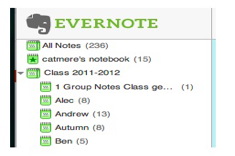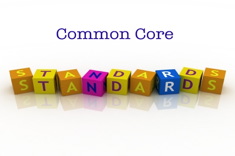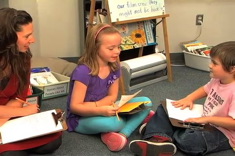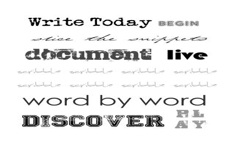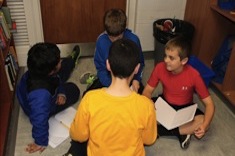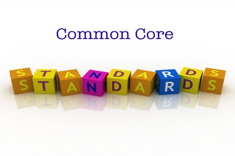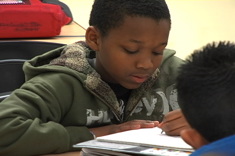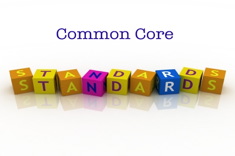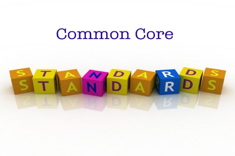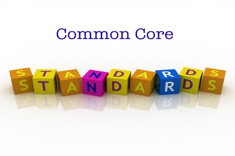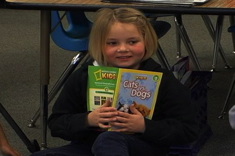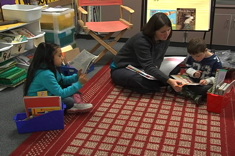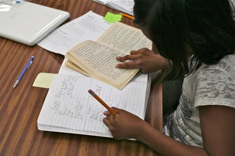Articles
Here is where you’ll find all the latest print features from our contributors. If you’d like to browse specifically by grade level, topic, or contributor, you can use the links in the right sidebar.
Latest Content
Capturing Student Learning with Evernote
It can be difficult to move from print to electronic records in the classroom. After using a spiral notebook for 10 years, Cathy Mere did just that.
Professional Development Openers and Icebreakers (ROUND-UP)
This round-up includes suggestions for opening activities and icebreakers to energize your colleagues from Amanda Adrian, Aimee Buckner, Shari Frost, and Jennifer Jones.
Common Core Conversations: Text Complexity
Amanda Adrian and Heather Rader find ways into understanding text complexity with students and teachers.
What’s On Your Summer Pleasure Reading List? (Round-Up)
We asked some of our favorite teacher authors what's on their nightstands and in their book bags for summer reading.
11/11/11: We Are One Celebration with Amy Krouse Rosenthal
Hundreds of people gathered at Millennium Park in Chicago for a joyful and silly celebration of Amy Krouse Rosenthal’s “We Are One” flash mob.
Same Old Love Song — A Cento
Shirl McPhillips creates a cento – a collection of lines written by other poets compiled into a new poem. It turns out poets were sampling other creative works centuries before rappers made the practice so popular today.
Exit Slips Open Doors
Amanda Adrian explains how a simple professional development closure activity garnered many new invitations to classrooms.
Literacy Groundings
Andie works with new teachers as they share their literacy groundings — the moments in their histories that shaped who they are as educators.
Write Today
Ruth Ayres describes her own experiences as an author, blogger, and teacher. She shows how possible and essential writing is for even the busiest educators.
Grouping: Who? How Big? How Often?
In this first installment of a series on grouping, Heather Rader considers size, composition, and frequency.
If You Like Goosebumps . . .
Students still love the Goosebumps series, and teachers can build on that passion by introducing them to other texts with similar appeal. Franki Sibberson shares books at a variety of reading levels which tap into student fascination with things that go bump in the night.
Learning to Write Engaging Nonfiction: A Middle School Partner Writing Study
Ann Marie Corgill takes a big risk and pairs her middle-school students randomly for a nonfiction writing project, and finds the risk pays off.
Unpacking the Common Core Standards: First Grade Information Texts
Franki Sibberson designs a booklist for tackling information texts in first grade.
“School” Writing at the End of the Year
Writing about education is important in Erin Ocon's middle school classroom. Although Erin's students are in the eighth grade, this is a terrific project for readers of any age, and could even be used schoolwide for closure and celebration.
Common Core Conversations: Using Evidence From Text
Amanda Adrian and Heather Rader explain how the standard for finding evidence in texts might change instruction.
Respond, Reflect, Rejoice: The 3 Rs of Writing Celebrations
Ruth Ayres explains how teachers might put less focus on big, showy events, and more on the daily small pleasures and joys of writing success in classrooms.
Common Core Conversations: Vocabulary
Amanda Adrian and Heather Rader explore connections between the Common Core and vocabulary instruction.
Preparing Students for Summer Reading (ROUND-UP)
This round-up includes suggestions from Choice Literacy contributors Julie Johnson, Beth Lawson, Cathy Mere, Donalyn Miller, Colby Sharp, and Karen Terlecky.
When It’s Time to Abandon Your Writing
Writers in the real world abandon drafts all the time, yet it’s a strategy which isn’t often encouraged in classrooms. Heather Rader considers the thorny issue of how teachers can promote this strategy, yet still deal well with those students who never finish any drafts.
Perspective as a Component of Text Complexity: A Common Core Booklist
Franki Sibberson tackles the connections between text complexity and perspective in this Common Core booklist.
Helping Young Readers Become Independent
Teachers speak often about the importance of helping students become independent, but what does that look like in practical terms? Katie DiCesare considers her interactions with Evan, an emergent reader, on the road to independence.
Common Core Standards: Spreading the Word
Literacy leaders working in large districts face special challenges when implementing new programs. Suki Jones-Mozenter writes about the strategies being developed in one of the largest districts in the country.
Previewing Nonfiction
Teachers are adding more nonfiction to their classroom libraries, and looking for ways to promote nonfiction with students in light of the emphasis on nonfiction in the Common Core. Franki Sibberson share tips for previewing nonfiction with students.
Best Practices in Spelling Instruction
Heather Rader wades through the research to find the best practices in spelling instruction.
Teaching and Assessing Persuasive Writing Skills
Heather Rader explores different ways into persuasive writing with teachers and students, highlighting the importance of helping students learn to cite and quote expert resources
Guided Reading in Perspective
Cathy Mere puts guided reading in perspective, explaining how it works as one piece of the puzzle when it comes to fostering a lifelong love of reading in students.
How Do We Know Small-Group Instruction is Effective?
Heather Rader considers how to assess the effectiveness of groups.
Stopping and Jotting
How can we be sure the writing tasks we ask of students are meaningful? Jennifer Jones looks at the issues of authenticity and control when it comes to assigning writing connected to reading in workshops.
The Affect of Tech on Splrs
Heather Rader considers the cultural divide between teachers and students who are “screenagers” when it comes to texting. If u r getting LOLed out in ur classroom u might want 2 read this.
Teacher Language and Listening with Ellin Keene (PODCAST)
In this podcast, Ellin Keene shares her thinking about linking oral language and literacy development.
Browse Content By
Type
Category
- Assessment Tools
- Big Fresh Archives
- Booklists
- Choice Numeracy
- Classroom Design
- Common Core
- Community Building
- Conferring
- Content Literacy
- Digital Literacy
- English Language Learners
- Equity
- Family Relations
- Free Samples
- Guiding Groups
- Leadership
- Literacy Coaches
- Mentor Texts
- Minilessons
- New Teacher Mentors
- Podcasts
- Poetry
- Quote Collections
- Reading Strategies
- Self Care
- Struggling and Striving Learners
- Talking and Listening
- Teacher Study Groups
- Teaching Reading
- Teaching Writing
- Word Study and Vocabulary
Author
- Melissa Quimby
- Nawal Qarooni
- Gwen Blumberg
- Julie Cox
- The Lead Learners
- Hannah Tills
- Josie Stewart
- Ruth Metcalfe
- Mallory Messenger
- Becca Burk
- Jodie Bailey
- Vivian Chen
- Mary Brower
- Tiffany Abbott Fuller
- Stephanie Affinito
- Ruth Ayres
- Leigh Anne Eck
- Heather Fisher
- Shari Frost
- Julie Johnson
- Suzy Kaback
- Gigi McAllister
- Shirl McPhillips
- Melanie Meehan
- Cathy Mere
- Debbie Miller
- Tara Barnett and Kate Mills
- Tammy Mulligan
- Dana Murphy
- Bitsy Parks
- David Pittman
- Brenda Power
- Heather Rader
- Matt Renwick
- Mandy Robek
- Christy Rush-Levine
- Gretchen Schroeder
- Jen Schwanke
- Brian Sepe
- Katherine Sokolowski
- Stella Villalba
- Jennifer Vincent
Grade Level
Choice Literacy Membership
Articles
Get full access to all Choice Literacy article content
Videos
Get full access to all Choice Literacy video content
Courses
Access Choice Literacy course curriculum and training

